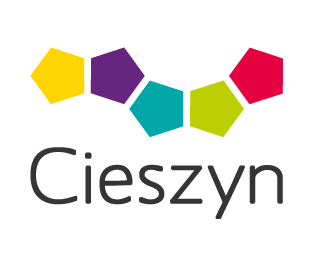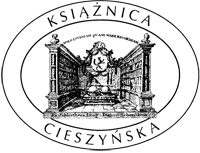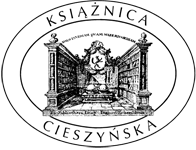Historic book collections almost always bear signs of physical damage. Its scope is determined by underlying causes, starting from long-term use, through improper storage conditions, and ending with natural disasters such as flooding or fire. In this case, ensuring stable climatic conditions, limiting exposure to light, observing detailed rules of making historic objects available to the public, regular checks and disinfection of selected copies are all extremely important elements which guarantee the longevity of book collections. And last but not least, the safety of the books is also ensured by appropriate formal regulations, fire alarms, burglary protection systems and evacuation systems needed in case of natural disasters or major catastrophes.
Protection of the collection before 1999
The resources which now belong to Cieszyn Library underwent conservation and were covered by preventive measures even prior to the official establishment of our Library, when they were stored in the Historic Branch of the City Library. The first conservation works covered the part of the collection which had been damaged in the flood of 1987. These books were restored by a few external conservation studios. A few years later, a conservator was appointed to ensure that there would be a person to manage the broadly defined protection of library resources. The main aim was to guarantee optimal storage conditions in the available rooms. At that time, the collection was scattered in several places around the town and stored in locations which were not fit for this purpose, for example in a few cellar rooms. After purchasing equipment which made it possible to measure and regulate climatic conditions, all resources were reviewed and books gathered by L. J. Szersznik were disinfected in situ. Then the most valuable part of the collection was transferred from the museum to specially adapted rooms at Przykopa 14 Street and Rynek 5 Street. A bookbinding studio was set up and the work on launching a conservatory studio started. Before a gas chamber was purchased, we disinfected books by placing sheets of filter paper soaked in a disinfectant between their pages. Until 1997, 520 volumes were disinfected using this method. Since the introduction of protection measures, librarians have participated in training courses on microbiological threats and specific requirements related to handling historic book collections.
Protection of the collection in today’s seat of Cieszyn Library
It was not until the modern building at Mennicza Street was built that we could comprehensively protect the whole collection. Nowadays, all our books are stored in this building. However, it was already in 1995 that the guidelines for protection and conservation of the book collection belonging to Cieszyn Library were drawn up. Our basic activities, whose aim is to prevent further deterioration and stop current damage, were devised in accordance with the Polish PN-ISO 11799 standard.
These actions include:
– maintaining proper and stable climatic conditions,
– checking the microbiological status of the collection,
– controlling external security of store rooms and of the whole building,
– devising and implementing direct protection measures of all items,
– restoring selected items,
– devising external standards for using the book collection.
And additionally:
– sharing expert knowledge with other institutions and members of the public who have historic book collections,
– popularizing knowledge about the protection of library collections, the methods of protecting private book collections, basic repair and conservation methods and historical matters related to books.
Controlling external security of the collection
What guarantees the safety of our library resources is the library building itself. It was designed with specific needs of historic book collections in mind. The collection gathered by Leopold Jan Szersznik is the most valuable part of our resources. It is stored in a special room adjusted to the needs of wooden 19th century book stands which are almost four metres high. The remaining store rooms are equipped with high density mobile shelving, as well as conventional stationary shelving.
All rooms in the Library have a comprehensive safety system. Burglary protection systems, fire alarms and fire extinguishing systems are turned on 24/7. Climatic conditions and access to all floors are also constantly monitored.
Items in exhibition rooms are kept in display cases designed to exhibit books. They are illuminated with light that has the right intensity. We use professional pads and fasteners which eliminate unfavourable tension during long exhibition periods.
Climatic conditions
What ensures stable climatic conditions is our air conditioning system that works in all store rooms. It maintains complex parameters at about 50% relative humidity and a maximum temperature of 20°C. In other rooms, we use individual air conditioners and portable devices. We use dehumidifiers in summer and humidifiers in winter. In most rooms, conditions such as relative humidity and temperature are controlled by an electronic monitoring system.
Controlling the microbiological status
All infected or mouldy items are disinfected. The largest number of items (36) was disinfected in 2003, after an inventory of the whole book collection stored in Cieszyn Library. For disinfection, we use a modern fumigation chamber with a capacity of 12 running metres. We use “S” gas (a mix of ethylene oxide and carbon dioxide) and monitor and manage the whole process from the operational panel in one of our studios. All disinfected copies are then appropriately marked.
Mass protection of book collections
We protect our library resources using all the means available. In the years 2005-2006, over 36 thousand loose sheets and 30 bound volumes were deacidified en masse in a paper clinic (as part of “Acid Paper” programme).
Another method we use to protect the collection is making copies, which enables us to limit the use of originals. Nowadays digitalization is an easy and a relatively cheap way of saving a historical source on a digital medium. Microfilms, which are the most durable copies, are gradually falling into disuse, but they are still used in library circulation. For immediate internal and external needs, we take digital photos.
Organizing and implementing direct protection measures
We regularly review our book collection, which is the foundation of devising a plan for its protection. It is our standard practice to use acid-free boxes, folders and envelopes, which makes it possible to safely store, move and make books accessible not only in the library building, but also outside it.
Ensuring that individual items are safe is one of the tasks of our bookbinding studio. This task is carried out systematically and whenever our employees report a need for help. Bookbinding activities are carried out in accordance with the abovementioned guidelines for protection and conservation devised in 1995. The guidelines are updated whenever new technical solutions and materials appear. They state that we should only use measures and materials of a conservatory quality, as well as methods based on the long bookbinding tradition and knowledge.
In the beginning, the tasks of the bookbinding studio focused mostly on sorting, packing and moving selected parts of the collection to acid-free containers. That’s how hand-written works, archives and magazines were secured. We used ready-made acid-free boxes and folders or ordered custom-made ones. The next step was to provide jackets, boxes and cases for damaged volumes, particularly valuable items and books with metal fittings. Only in 1994, over 650 protective jackets of acid-free carton were made. Old prints bound in leather were restored by rubbing greasing and moisturizing emulsion in their covers. Some minor repair works were carried out as well. In 1997, over 1100 items underwent such procedures. The bookbinding studio provides all kinds of goods needed to sort out books, such as shelf labels, envelopes, spacers and boxes. We provide new acid-free jackets and protect newly purchased items on an ongoing basis. In recent years, the bookbinding studio became responsible for preparing materials which are to be digitized.
In the years 1994-2017, the bookbinding studio repaired about 3,600 books, 515 maps, posters, diplomas and lithographic prints. Its workers made over 300 new bindings and a few thousand jackets, boxes, folders, envelopes and labels.
Since 2008, the bookbindery performs laminating services using a professional laminator and special tissue paper. Lamination is used mainly in the case of printed, machine-produced paper of poor quality, for example newspapers, posters and official forms printed on so-called acid paper. By the end of 2017, a few hundred magazine units were laminated.
Conservation of the collection
In the beginning, conservation of the collection was entrusted mostly to external conservation studios. Funds for such services were raised from different sources. Until 1994, 50 bound books and manuscripts and 10 unbound items were restored thanks to these actions. By comparison, between 1995 and 2017, external conservation studios restored 48 prints and 16 bound manuscripts, one hand-written document and a globe, whose conservation was part of a diploma project. 22 items were renovated under a project entitled “Protection and Conservation of the Written Heritage of Cieszyn”, which was carried out in the years 2007-2010.
The list of items selected for conservation due to their state of preservation includes over 750 bibliographic records. Out of those, we single out items with significant historic value, which are renovated in the first place. Their list, which was made after a comprehensive review of the whole collection, is constantly updated due to the pending stocktaking of old prints, planned projects and the exhibitions which we organize. It is always the historic value of a given item and the degree of its deterioration assessed by experts that determines whether it needs to be renovated. In the new building which houses Cieszyn Library, we have more studios and rooms at our disposal, so we decided to broaden our plans and also restore the collection of archives gathered by the Polish Ethnological Society and manuscripts from the L. J. Szersznik’s Library, whose condition is often very poor.
The conservation process is a set of actions whose aim is to restore the most damaged items. Its scope is determined by the condition of a given item and the way in which it is being used today. Conservation is usually limited to the necessary minimum. Methods used during conservation are identical to the ones which were used when a given old print or manuscript was created. However, we also use state-of-the-art diagnostic methods, which enable us to identify the type of materials used. The aim of conservation is mostly to restore the aesthetic qualities and utility values of an item.
Conservation begins with inspecting the whole item in detail, conducting all the necessary tests, analysing the materials used and the ways in which individual elements were made. We also describe the item and take photographs. This is the foundation which allows us to set objectives and formulate a conservation plan. Conservation is usually a time-consuming process, so it covers only the most valuable and severely damaged items. Our conservation studios, the so-called dry and wet studios, are well-equipped. For instance, we have at our disposal a machine which fills holes with paper fibre.
The conservation studio has been functioning as part of Cieszyn Library since 1994. By the end of 2017, we restored (both in our own studio and outside it) 169 bound volumes (prints and manuscripts), over 1200 hand-written unbound document units and 185 other items, such as maps, scrolls, posters, tracing paper sheets etc.
Supporting other institutions and members of the public who have historic book collections
Cieszyn Library shares expert knowledge with other historic libraries and archives in our town and region. Every collection of old books or documents requires a different approach. An action plan must be based on a review of the whole collection, as well as an assessment of its state of preservation, housing conditions and expectations of the owner. We review book collections, assess their condition and prepare potential action plans. So far, we provided such services to the Cieszyn Silesia Museum, Tschammer Library and Archive, Brothers Hospitallers Library and Archive, National Cieszyn Silesia Association, Saint Mary Magdalene Parish, National Centre, Zofia Kossak-Szatkowska Museum in Górki Wielkie, Catholic Parish in Puńców, Ustroń Museum, and Gustaw Morcinek Museum in Skoczów, among others.
In the years 2007-2010, we implemented a project entitled “Protection and Conservation of the Written Heritage of Cieszyn”. Cieszyn Library was the leader of the project and our task was to plan and coordinate works performed at three out of four beneficiaries (Protestant Parish, the Monastery of Brothers Hospitallers, and the Cieszyn Silesia Museum). Based on its own experiences, the Department of Protection and Conservation prepared comprehensive programmes for protecting book collections handled by our partners.
Other duties of Department of Protection and Conservation
The Department manages a small photographic studio whose task is to take photographs during conservation, at our readers’ request or to document various projects and activities initiated by Cieszyn Library. By the end of 2017, we created over 30 thousand digital files.
As part of our activities which promote knowledge, we organize shows entitled “Conservation of old books” and “Bookbinding in Cieszyn”.




